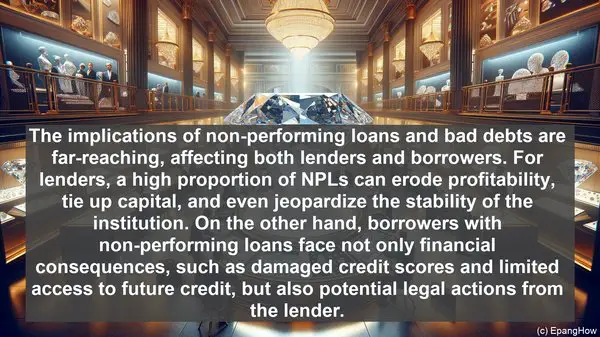Introduction: The Common Misconception
Greetings, finance enthusiasts! It’s time to debunk a common misconception. Many believe that non-performing loans and bad debts are synonymous. However, in the intricate world of finance, such assumptions can lead to misinterpretations and flawed strategies. Let’s embark on a journey to understand the true distinctions between these two terms.

Defining Non-Performing Loans
Non-performing loans, often abbreviated as NPLs, refer to loans that have not generated the expected interest or principal repayments for a specified period. In simpler terms, these are loans where the borrower has failed to meet their payment obligations, resulting in a delay or default. It’s important to note that the ‘non-performing’ status is determined based on predefined criteria, such as the number of days of overdue payments.
Unpacking Bad Debts
While non-performing loans encompass a broad spectrum, bad debts are a specific subset within it. Bad debts are loans that are deemed irrecoverable, meaning the lender has exhausted all possible means of collection, and there is little to no hope of retrieving the outstanding amount. In such cases, the lender often writes off the debt as a loss, making it a significant financial setback.

Implications for Lenders and Borrowers
The implications of non-performing loans and bad debts are far-reaching, affecting both lenders and borrowers. For lenders, a high proportion of NPLs can erode profitability, tie up capital, and even jeopardize the stability of the institution. On the other hand, borrowers with non-performing loans face not only financial consequences, such as damaged credit scores and limited access to future credit, but also potential legal actions from the lender.
Managing Non-Performing Loans: Strategies and Considerations
Given the potential risks associated with non-performing loans, lenders employ various strategies to mitigate the impact. These can include restructuring the loan terms, offering grace periods, or even selling the debt to specialized entities. However, each approach comes with its own set of considerations, such as the impact on cash flow, the potential for recovery, and the regulatory landscape.
